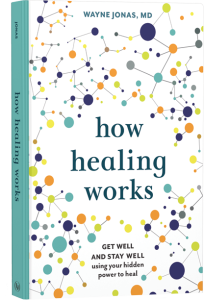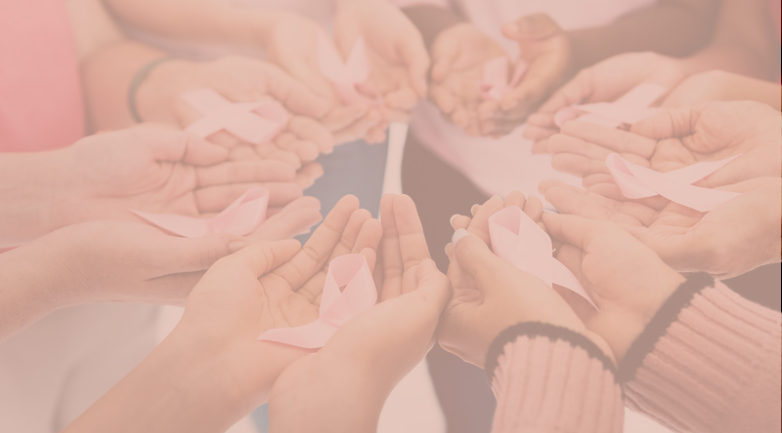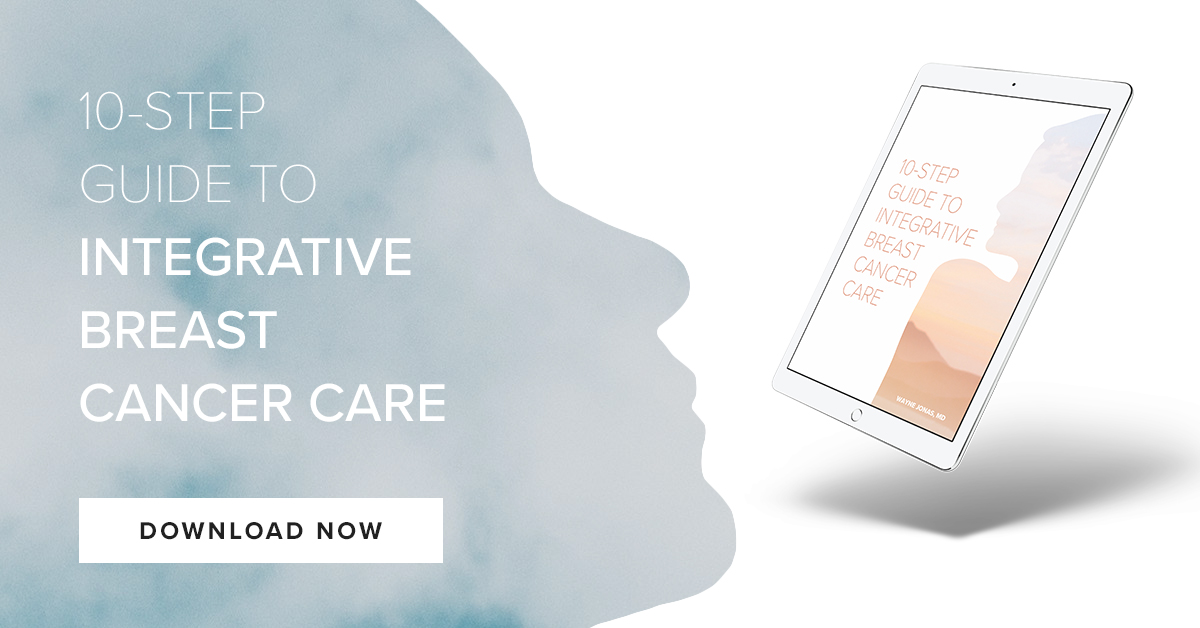Cancer is a complex illness and being diagnosed with cancer sets off multiple reactions and changes – mind, body, and spirit. Being diagnosed with cancer can be a traumatic experience. And like most traumatic experiences, it can leave a lifelong, lasting imprint on a person. Cancer Survivor, Jenny Leyh, offers advice on how to overcome the physical and emotional trauma after being diagnosed with breast cancer.
Trauma comes in many shapes and sizes. It can be physical, emotional, acute, sustained—or any combination of these. Whatever the cause, a traumatic experience can leave a lasting imprint on a person. If not dealt with, a traumatic experience can cause serious problems down the line, to the point that it can fundamentally change a person. And usually trauma, especially if prolonged or early in life, can affect a person for the worse if not dealt with.
“Trauma can come from a serious medical diagnosis,” says Dr. Wayne Jonas, physician and author of the national best-seller How Healing Works. “Cancer is a diagnosis that often does result in trauma – from both the name and the treatment. I talk about how that happened in my family – several times. Each time, my wife and I got better at dealing with it in a more positive way than before.”

Oxford Dictionary defines trauma as “a deeply distressing or disturbing experience.” And there’s no shortage of consensus in the medical community that distress (the bad kind of stress) is connected to heart disease, diabetes and possibly cancer. In his book, The Body Keeps the Score, Bessel van der Kolk, MD, further examines how our physical being is affected by traumatic events.
“Trauma robs you of the feeling that you are in charge of yourself,” says van der Kolk, adding that it is “much more than a story about something that happened long ago. The emotions and physical sensations that were imprinted during the trauma are experienced…as disruptive physical reactions in the present. In order to regain control over yourself, you need to revisit the trauma…to find ways to cope with feeling overwhelmed by the sensations and emotions associated with the past.”
When I heard the words “you have breast cancer,”—in the third trimester of my pregnancy, no less— my whole world came to a screeching halt and my mind went blank.
It’s been nearly two years since that day and those feelings remain a vivid part of my life. Whenever I hear news of someone being diagnosed with cancer, my own version of that nightmare comes flooding back to mind. It was a time when information was overwhelming and foreign, and fear was heightened. The trauma of my cancer diagnosis imprinted on me like a branding iron, and the emotions I experienced in that initial phase stayed with me, bubbling to the surface whenever memories of that time returned.
Feeling on edge all the time, I realized I needed to do something about it for my sake and for the sake of those around me. I turned to yoga and mindfulness meditation as a means to deal with my stress and anxiety.
“Body awareness puts us in touch with our inner world, the landscape of our organism,” says van der Kolk. “Mindfulness puts us in touch with the transitory nature of our feelings and perceptions. When we pay focused attention to our bodily sensations, we can recognize the ebb and flow of our emotions and, with that, increase our control over them.”
According to van der Kolk, achieving a heightened level of self-awareness is central to recovery after trauma. And while reaching a point of self-realization is essential in the recovery process, facing the challenges of what you uncover alone is beyond most people’s capacity alone. Seeking out community—a therapist, a friend or family member, a support group of others who have experienced similar trauma—is the second crucial step in healing.
“Having a good support network constitutes the single most powerful protection against becoming traumatized… In order to recover, mind, body, and brain need to be convinced that it is safe to let go,” says van der Kolk.
I knew that I needed to face my emotions head on, so I began seeing a therapist. I also craved a connection with others who knew exactly the trauma I was experiencing, so I sought out cancer support networks, both digitally and in person.
I first learned about HopeWell Cancer Support in Baltimore, Maryland, around the time that I was diagnosed. HopeWell offers a variety of physical and emotional healing programs for cancer patients in all phases of their journey—everything from yoga and meditation to support groups and creative classes, such as beading.
Suzanne Brace, Executive Director of HopeWell, said at first she wasn’t sold on some of the creative classes. But the feedback she received about them shined a light on their therapeutic benefits.
“People with any kind of pain often find relief by being focused on an expressive arts project. People with neuropathy in their hands find that working on something that requires dexterity, like beading, is as effective as physical therapy. And the great joy one feels in having made something ‘pretty’ often comes as a lovely surprise.”
On a much grander scale, HopeWell offers a connected community for those wounded by the trauma of cancer and its treatment.
“We believe that most of the things we do here have a spiritual component for people, just by virtue of offering a nurturing, safe place to become centered and grounded.”
In addition to taking advantage of local programs like the ones I found at HopeWell, I took to social media and found a group that was specific to young women affected by breast cancer—Young Survival Coalition (YSC).
Finding a community of women who understand intimately the trauma of cancer was a game-changer for me. Cancer is more than just a physical condition—it imprints on your soul. Connecting with other women in my age group who had similar stories—young, diagnosed with breast cancer, some with young children—allowed me to find empathy, validation, shared wisdom, and ultimately, strength. I recently attended a summit hosted by YSC in Florida and attended programs and workshops that explored new breakthroughs in breast cancer research, nutrition, survivorship, yoga, meditation and sexual intimacy after cancer. I found these sessions interesting, but really, it was the time spent socializing with the other women—laughing, sharing stories—that was the most invigorating and rejuvenating aspect of the weekend.
“Each time my wife has been diagnosed with breast cancer,” says Dr. Jonas, “she has reached out to family and friends, creating a network of social support to help her get through chemotherapy, radiation and surgery. And each time, this network has looked different, customized to those available and willing to help, and to the demands and needs of her life at the time. The first time, we needed extra care for our young children. The second time, she needed to stay close to our grandchild. Both times it was her social network that helped her through.”
Addressing and understanding the emotions experienced as a result of the disease is difficult. It’s painful. And it’s entirely necessary to the healing process. As I approach what should be the final stage in my active journey with cancer, my reconstruction surgery, I am so very hopeful for the future because I found the personal insight and community wisdom I needed to turn this horrible, traumatic experience from an unending stressor into a source of strength.
Jenny Leyh is a mother, cancer survivor and freelance writer living in Baltimore, Maryland. To read more about her story, visit: http://jennyleyh.com/
Be sure to read all of Jenny Leyh’s Cancer Series at the links below:
-
Cancer Series Part I: An Integrative Approach to Cancer Care
-
Cancer Series Part II: Healing vs. Curing After Cancer Treatment
-
Cancer Series Part IV: How to Build Your Stress Response Muscles During Recovery From Breast Cancer
-
Cancer Series V: How to Heal After the Physical and Emotional Trauma From a Cancer Diagnosis
 Take Your Health Into Your Own Hands
Take Your Health Into Your Own Hands
Drawing on 40 years of research and patient care, Dr. Wayne Jonas explains how 80 percent of healing occurs organically and how to activate the healing process.


